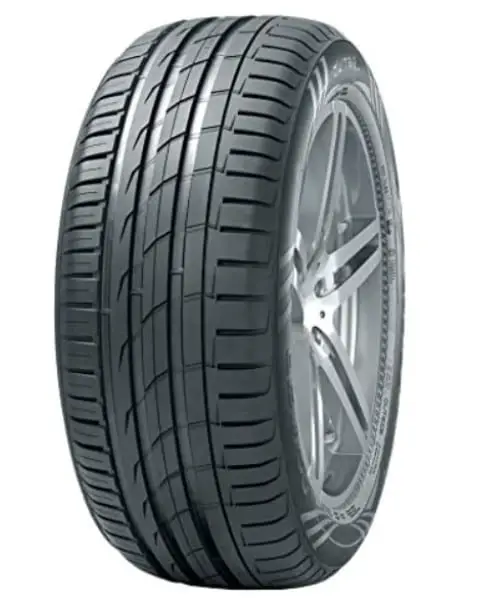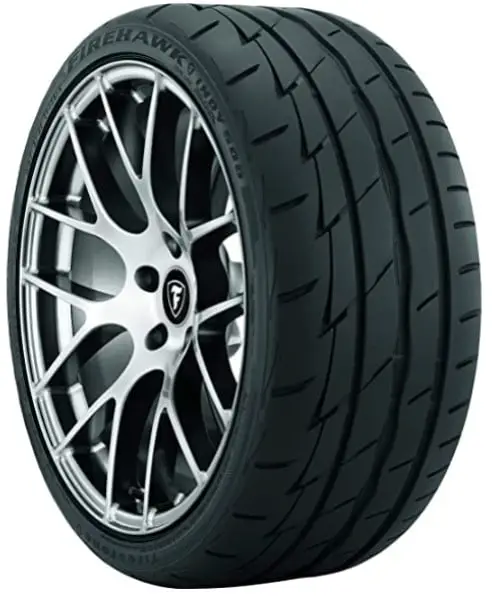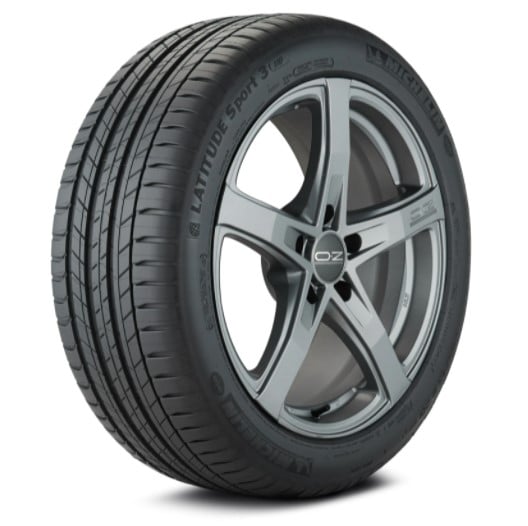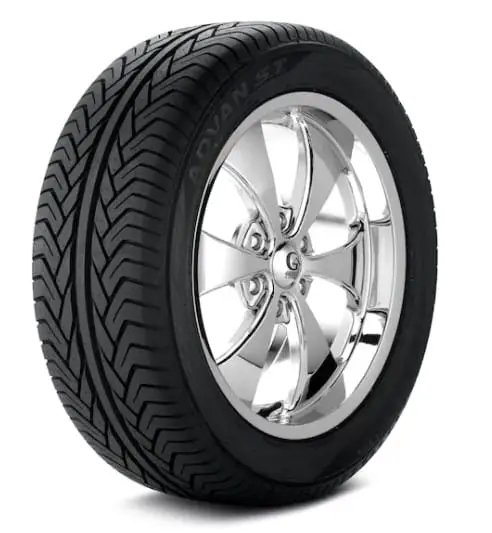Do you live in an extremely hot climate and own a car? It is vitally important to keep your vehicle properly maintained so that you don’t end up stuck on the side of the road with a burst tire or a mechanical fault caused by extreme heat.
In general, most people keep mechanicals in check and maintain them. Tires, however, are often neglected. The average person does not know the technicalities involved with tires, such as what size, type, or company to use on their cars. As a result, we will keep you updated on which tires are suitable for your car and how often they need to be replaced.
We will start off this chapter with tires for hot climates. When the sun shines harshly, tires meant for hot climates provide better traction, which is why people prefer to use them. In addition, there are all-purpose tires, but people who live in hot climates and don’t see any other season should use summer or hot climate tires only for the best driving experience.
Here is a short buying guide to keep in mind a few things when buying hot climate tires so that you don’t get taken advantage of by a salesman.
Things to Consider Before Buying the Best Tires for Hot Climates:
When it comes to buying summer or hot climate tires, there are quite a few factors to consider. We’ve listed most of the important ones below.
Type of the Tire:
Tires come in a variety of sizes and shapes. Travelers usually use touring tires since they give an easy and relaxed travel experience while traveling long distances.
The all-season tire, although these tires can handle every road and every highway with the tread pattern that is usually symmetrical, can be considered a “basic tire”. The tires are not made specifically for specialized terrain like winter, wet and dry tires.
In the summer, you may be seeking tires that work well. Summer tires fall into this category. The treads are designed for hot climates and desert roads, providing you with extra grip. Circumferential grooves are designed to prevent hydroplaning when driving through puddles or streams.
Inflation Level:
Each tire has a different inflation level. Thus, you cannot simply fill every tire to the maximum, you must keep the inflation level in mind as well. It’s important to keep in mind when buying tires for hot climates that you shouldn’t ever lower the pressure in such tires.
Due to the fact that their rubber can cool down to below the minimum temperature once cooled, their pressure falls substantially.
Rubber:
Tires are primarily made up of rubber, which can be mixed in a variety of ways. Different substances and ratios can change the properties of rubber. This is extremely important since different rubber types have different temperature tolerances.
There are tires that cannot withstand extreme cold, yet there are others that can only handle high temperatures to a certain degree. Prior to making a purchase, you need to find out the tolerance level of the offer.
Tire Treads:
Different surfaces require different tread types. Winter treads are generally knobbier and have more grooves and ridges, whereas summer treads are smoother.
Summer tires with longer centerlines and stiffer edges are the best. Cornering is more controlled this way.
Area of Contact:
Summer tires generally have a wider contact area. The reason for this special arrangement is that road surfaces are generally very hot during the summer.
longer_content - longer_content -->Tires that are wider will distribute heat more effectively, reducing wear and tear. Racecar tires also have wider treads for the same reason. Due to increased friction, it is necessary to have a large contact area.
Now that’s out of the way, let’s look at the best tires for hot weather!
Best Summer or Hot Climate Tires:
1. Nokian zLine Ultra-High-Performance Summer Tire

- Model: ZLine SUV.
- Weight: 37.5 pounds.
- Tread Depth: 12 32nds.
- Discontinued? No.
Nokian came into being back in 1865 when it used to be a mill of pulp. Over the years the company expanded and diversified and in 1932 started manufacturing their car tires. Being in business ever since, they’ve developed a range of tires, one of which is the zLine SUV Ultra-High-Performance Summer Tire.
Sidewall Technology: There is a slight chance that the sidewall of the tire’s housing will keep striking the moving tire when the car is running. To prevent this, Nokian has developed a unique sidewall technology that uses a fiber that is very resistant to tearing and cutting. It has also been used in military applications as well as aviation industries.
Prevents Aquaplaning: Aquaplaning is a phenomenon where the water starts to build up between the tire’s surface and prevents smooth turning, stopping, and rolling of the tire. To keep this from happening in tires for hot climates, Nokian has added blade grooves that are cut into the center of the tire to guide the flow of the water towards longitudinal grooves. Trumpet grooves meanwhile are dug into the shoulders to keep the tire safer.
2. Hankook Ventus V12 evo 2 Summer Radial Tire

- Model: Venus V12 Evo 2.
- Weight: 23.3 pounds.
- Tread Depth: 10 millimeters.
- Discontinued? No.
Finding a summer tire for hot climates can be a hassle for many people, but Hankook has the solution in hand. Ventus V12 Evo 2 Summer Radial Tire by Hankook is designed for those seeking to ride more comfortably, regardless of weather conditions.
Strong Wire: The wire in the center of the tire provides stability as well as strength in hot climates.
Reduced Noise: While ordinary tires may have up to three conventional pitches, the Ventus has five. This means less noise while traveling, so you can travel without any discomfort.
Cooling System Built Within: This system ensures that the center of the treads of the tire remains cool at all times, especially in hotter climates. In comparison to other manufacturers, it also allows water to drain quickly.
3. Firestone Firehawk Indy 500 Ultra-High Summer Performance Tire

- Model: Firehawk Indy 500.
- Weight: 28 pounds.
- Tread Depth: 10 32nds.
- Discontinued? No.
Founded in 1900 by Harvey Firestone, Firestone’s tires have been in business for the last 121 years. And with a company that old, you can be sure that the tires you’re getting are of great quality. After all, they were the first suppliers of Ford.
Control on Corners: When driving an SUV in hot climates like a desert, it is essential to have tires that are easily controlled. The last thing an avid SUV desert racer wants is to have less-than-desired control on sandy dunes. With the Firehawk Indy 500, that may be considered a thing of the past. Getting superior control over sudden corner cuts gives you the stability you need.
Shorter Stopping Distance: The Firehawk Indy 500 is designed with shorter distances in mind. Ideally, one would prefer a minimal stopping distance if they had to stop a car urgently. That’s exactly what you get with this tire.
4. Continental ContiSportContact 5 SUV

- Model: ContiSportContact 5 SUV
- Weight: 30 pounds.
- Tread Depth: Unavailable
- Discontinued? No.
Continental is a very old and reliable German tire manufacturer that was founded in 1871 as a rubber manufacturing company. In 1898, they began making tires. Since then, they have diversified into a variety of car-related businesses.
However, you, as a driver of an SUV working in hot weather and climates, would want something different from them. Something that can give you a long mileage, and suits the harsh weather conditions you drive on. Here’s what Continental has in store for you: the ContiSportContact.
Made with Steel and Nylon: The core of the tire is made of two bands of steel that are wrapped around in a spiral fashion by polyamide, a synthetic fiber, as well as bound with nylon threads that give the tire extra strength and durability.
Easy Cornering: The tires are designed specifically with dry roads of warm climates in mind so that you can cut some corners with ease. However, they aren’t made to be driven on cold roads, or those that are freezing.
5. Continental ContiSportContact 5 SSR SUV

- Model: ContiSportContact 5 SSR SUV.
- Weight: 43 pounds.
- Tread Depth: 9/32″.
- Discontinued? No.
Another tire of Continental has made it to our list and it is the Continental ContiSportContact 5 SSR SUV. It shares many characteristics with its brother, 5 SUV.
Black Chilli Polymer: The black chilli polymer has been made into an asymmetrical tread that creates broad shoulders, these shoulders help balance your SUV naturally on dry and hot roads, of arid climates. Furthermore, the polymers also generate heat in-between them so when you brake on a road that is wet, or dry, the polymers will generate heat to provide quick braking.
Move Even After Punctures: The tires have a unique ability to run some more distance because of their MOE and MOExtended sidewall technology. Though not all tires by every manufacturer are of this type and this also depends on the nature of the roads, as well as on distance before the tire can be replaced.
Learn More: How to slash tires without getting caught?
6. Goodyear EAGLE F1 ASYMMETRIC SUV-4X4

- Model: EAGLE F1 ASYMMETRIC SUV-4X4.
- Weight: 31pounds.
- Tread Depth: 10/32″
- Discontinued? No.
The year Goodyear started creating bicycle and horse carriage tires was 1898. Ever since they too like their old competitors have been able to not just sell more car tires, but also SUV tires. Even if those tires are made for hot climates and dry roads. They too, like Firestone, have sold their tires to Henry Ford’s Ford Automobile Company.
More Steel: Goodyear has three nylon bands in each of its tires, plus the steel to keep it stable on those warm climate roads, plus polyamide. These tires are only meant for warm, dry roads, and the company will not provide any replacements if a customer uses them on an icy, snowy road, which could result in cracks.
Control and Comfort: SUVs are getting more and more powerful as time passes, thus requiring better tires to take you around cruising on those hot weather roads. With the Eagle F1 though you have that covered with its superior balance.
7. Michelin LATITUDE SPORT 3

- Model: LATITUDE SPORT 3.
- Weight: 39 pounds.
- Tread Depth: 8.5/32″.
- Discontinued? No.
Founded by two brothers back in 1889, Michelin doesn’t need any formal introduction. The company is the world’s largest tire manufacturer and is based in the Clermont-Ferrand region of France. Being the biggest tire-makers, they too have a tire that can be used in SUVs in hot climates and warm weather. That being the Michelin LATITUDE SPORT 3.
Fuel Economy: Variable sipe thickness throughout the tire reduces overall deformation and improves rolling resistance, helping you to save more fuel on dusty, hot roads. In addition to these benefits, the tire is made of environment-friendly materials.
Noiselessness: Some variants of the LATITUDE SPORT 3 are made with the new Michelin Acoustic Technology, which is having a layer of sound-canceling material inside the tire, which helps in decreasing noise inside the car.
8. Hankook VENTUS ST RH06

- Model: VENTUS ST RH06.
- Weight: 42 pounds.
- Tread Depth: 11/32″.
- Discontinued? No.
And yet another SUV summer tire made for warm roads drier climates by Hankook makes it to the list. This one is without a shadow of a doubt, the second-heaviest on the list, coming in at 42 pounds or about 19.05 kilograms. However, that comes with many advantages.
High-tech Compound: Hankook has included in these tires a V-shaped compound that is rich in chemicals that provide you with balance and stability on warm summer days, without sacrificing strength. This gives better traction even on wet surfaces.
Dual Depth Pitch Technology (DDPT): Hankook has developed this innovative technology that when combined with their Controlled Footprint Shape (CFS), gives not only better mileage and handling, but also ensures that the SUV generates less and less noise.
9. Yokohama ADVAN S.T.

- Model: ADVAN S.T.
- Weight: 40 pounds.
- Tread Depth: 11/32″.
- Discontinued? No.
The renowned Japanese tire manufacturer too couldn’t miss out on the opportunity of producing tires for SUVs who are driven on warm, hot climate roads. The company was founded amid the First World War, in 1917. And has been making tires for the last 104 years.
Great Design: Its latest ADVAN ST tire is designed keeping in mind not just SUVs, but even sports trucks. Due to its excellent design and high performance, the car is quiet and enables the driver to drive in peace even in hotter climates.
Better Speeds: The tread compound is of high quality and is shaped like a W, which improves traction, allowing the driver to achieve higher speeds. Tires with these characteristics allow you to achieve speeds up to 200 mph.
10. Bridgestone TURANZA ER30

- Model: TURANZA ER30.
- Weight: 30 pounds.
- Tread Depth: 11/32″.
- Discontinued? No.
Lastly comes Bridgestone. The famous Japanese tire manufacturer. The second-largest company making tires in the world. No tire list can ever be complete without Bridgestone being in it. And being a company that was founded in 1931, almost 90 years ago, they surely have the experience as well.
Stability: With the incredible grip that Bridgestone provides for whether it is SUVs that are running in hot climates on warm roads, or whether it’s a sedan driving at a slow speed on some Arab highway, you can be sure that you’re getting that solid and stable grip on those roads with the Turanza ER30.
Large Grooves: Grooves have been carved into the tire to let water out and get that grip without sacrificing any stability. Circumferential and lateral grooves are of immense help as they maximize the speed of the car as well. The tread is better than what most rivals offer for the same price.
FAQs:
Q1: How long does a tire last on average?
The average tread life of a tire is 50000 to 60000 miles. However, there are various factors that can effectively shorten tire lifespans.
Q2: Are they for flat-running?
A: Some of them are “run-flat” tires for shorter distances but overall it should be avoided.
Q3: Can they be used in areas like Minnesota or Alaska?
A: No they’re designed for places like Nevada, California, North Africa, and the Arabian Peninsula.
Q4: Are tire noiseless tires important?
A: Yes, if you want to have a peaceful experience while driving your vehicle then you need tires that are as noiseless as possible.
Q5: Can they be driven on wet roads?
A: Yes they can.
Conclusion:
In conclusion, if you’re looking for tires for a vehicle that will be traversing different terrains either in a hot climate or on hot roads, you’d need a tire that can give you about 30,000 miles of use.
You’d also like to consider the steel wiring in the tire, how the grooves are cut, and the shapes? Whether the shoulders are nylon-wrapped or rayon-wrapped inside the tire. The last two aspects to consider are how much they weigh and what prices all these competitors are offering.

